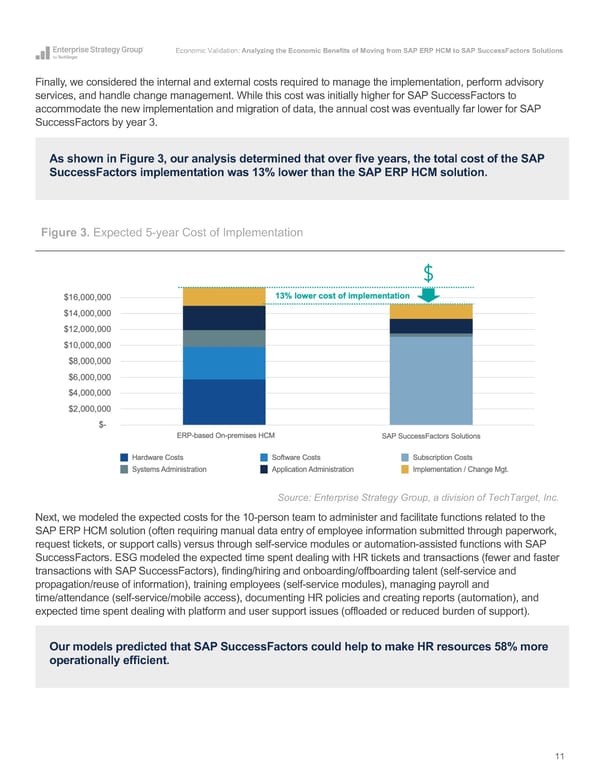Economic Validation: Analyzing the Economic Benefits of Moving from SAP ERP HCM to SAP SuccessFactors Solutions Finally, we considered the internal and external costs required to manage the implementation, perform advisory services, and handle change management. While this cost was initially higher for SAP SuccessFactors to accommodate the new implementation and migration of data, the annual cost was eventually far lower for SAP SuccessFactors by year 3. As shown in Figure 3, our analysis determined that over five years, the total cost of the SAP SuccessFactors implementation was 13% lower than the SAP ERP HCM solution. Figure 3. Expected 5-year Cost of Implementation Source: Enterprise Strategy Group, a division of TechTarget, Inc. Next, we modeled the expected costs for the 10-person team to administer and facilitate functions related to the SAP ERP HCM solution (often requiring manual data entry of employee information submitted through paperwork, request tickets, or support calls) versus through self-service modules or automation-assisted functions with SAP SuccessFactors. ESG modeled the expected time spent dealing with HR tickets and transactions (fewer and faster transactions with SAP SuccessFactors), finding/hiring and onboarding/offboarding talent (self-service and propagation/reuse of information), training employees (self-service modules), managing payroll and time/attendance (self-service/mobile access), documenting HR policies and creating reports (automation), and expected time spent dealing with platform and user support issues (offloaded or reduced burden of support). Our models predicted that SAP SuccessFactors could help to make HR resources 58% more operationally efficient. 11
 Analyzing the Economic Benefits of Moving from SAP ERP HCM to SAP SuccessFactors Solutions Page 10 Page 12
Analyzing the Economic Benefits of Moving from SAP ERP HCM to SAP SuccessFactors Solutions Page 10 Page 12